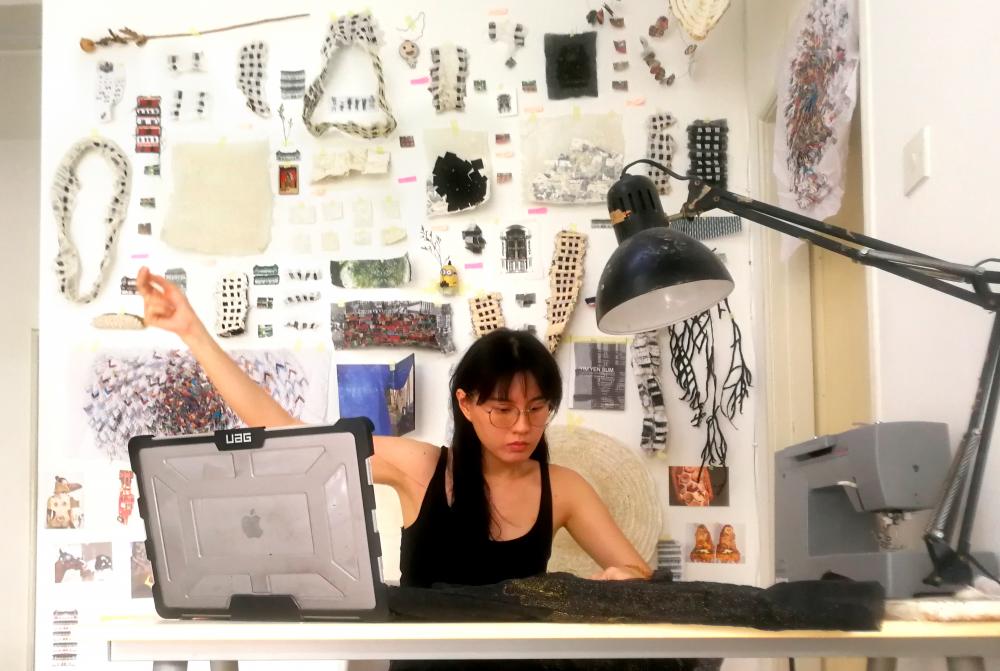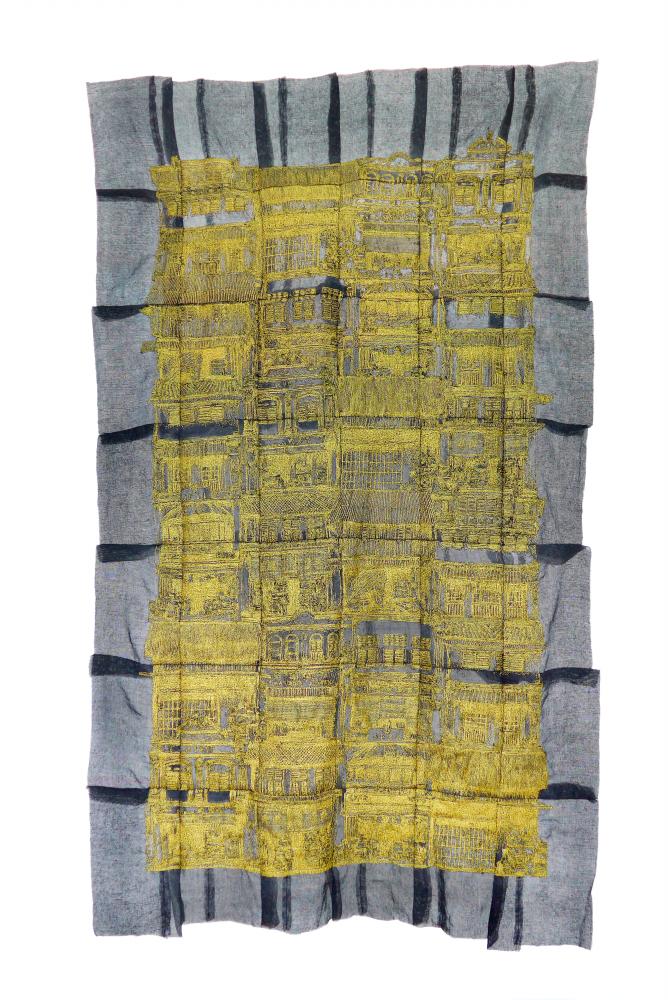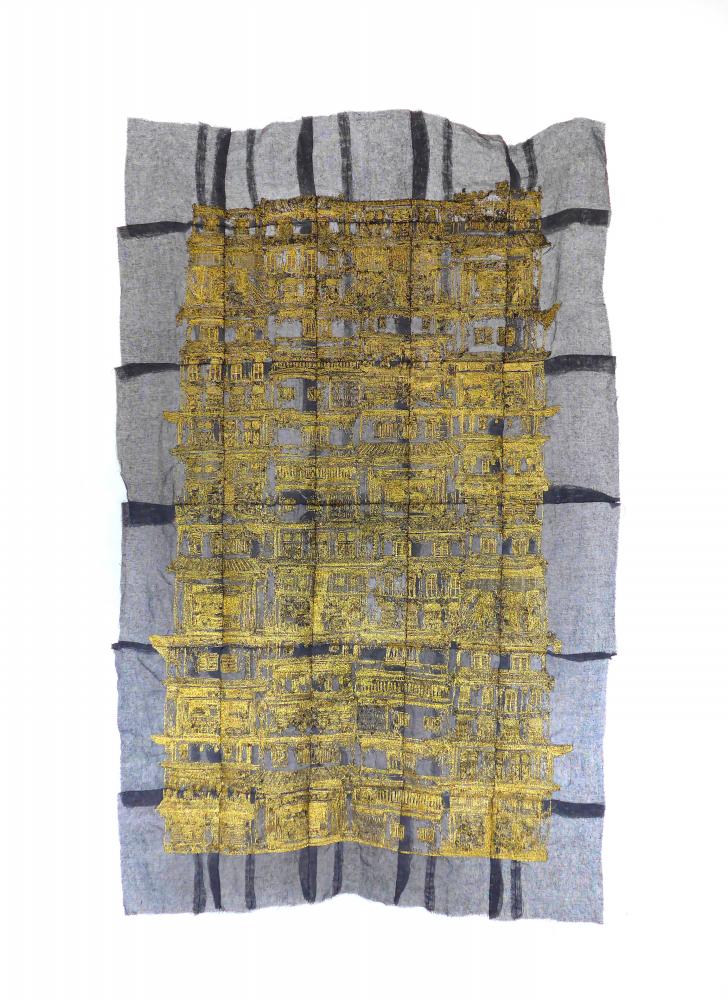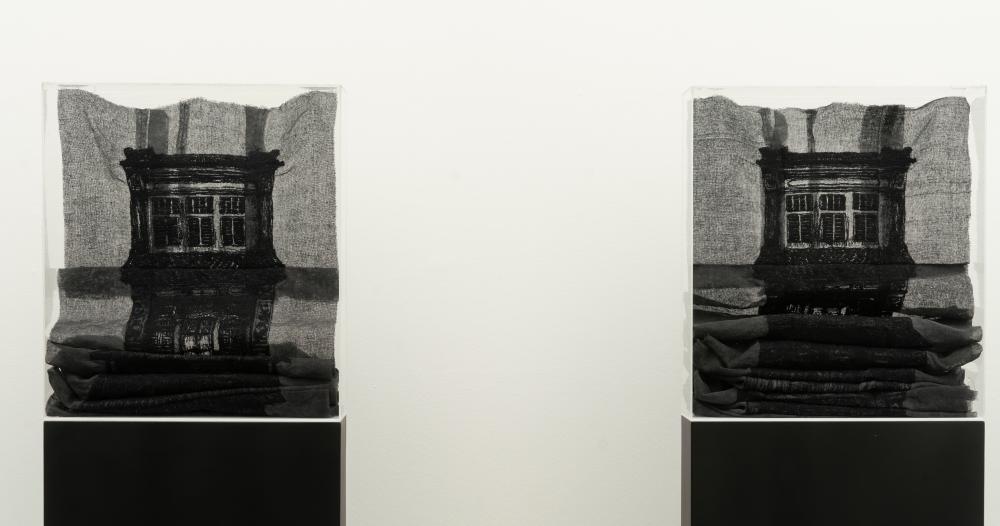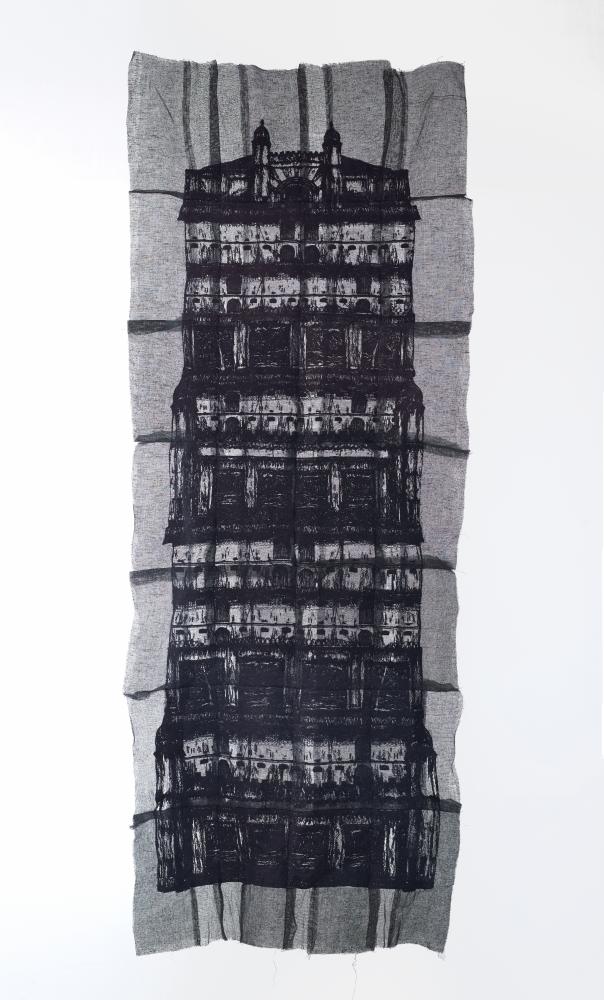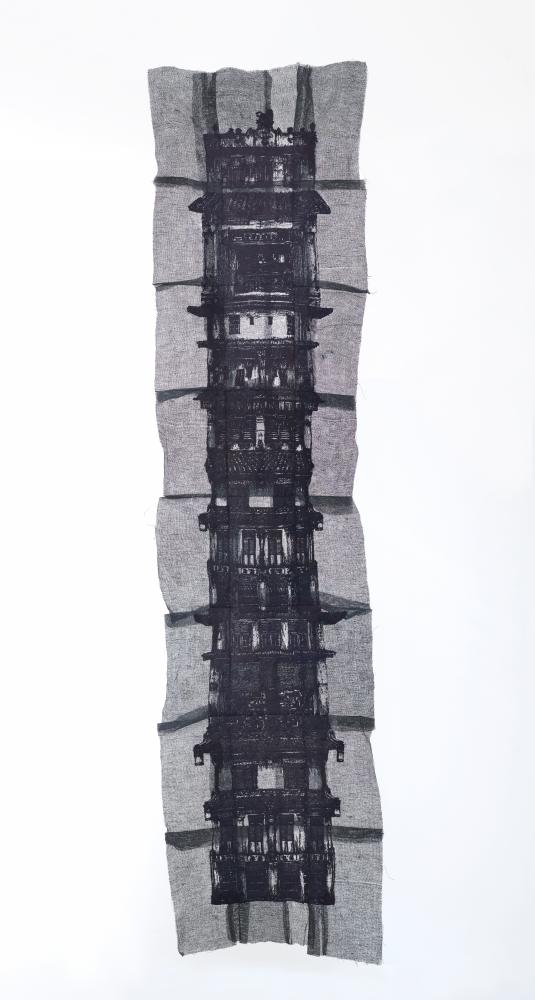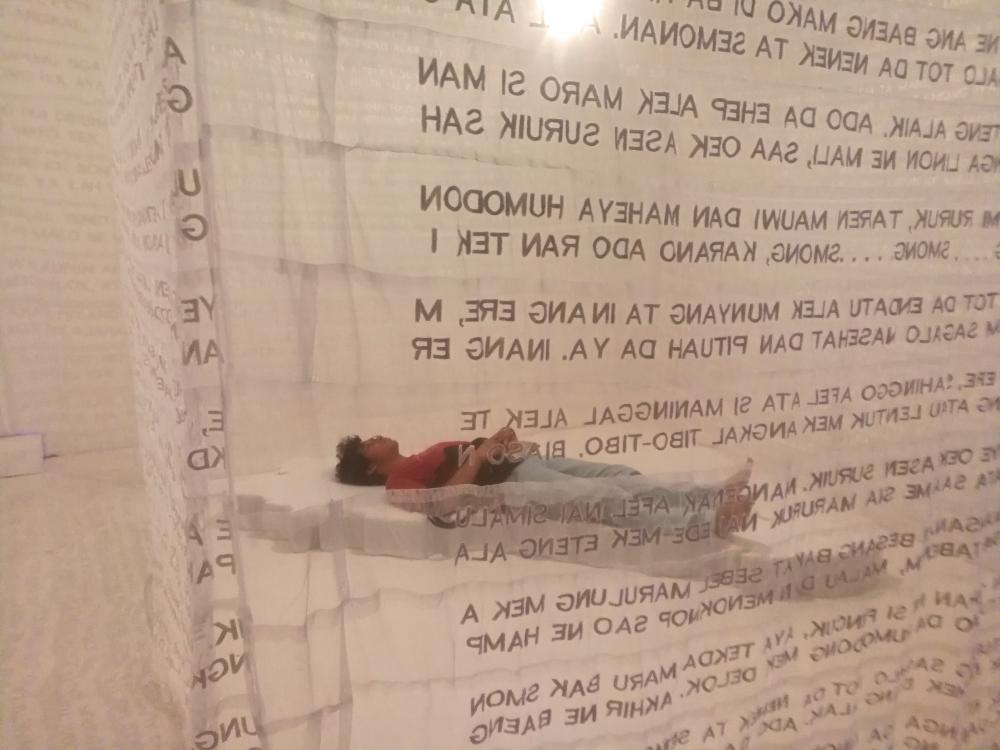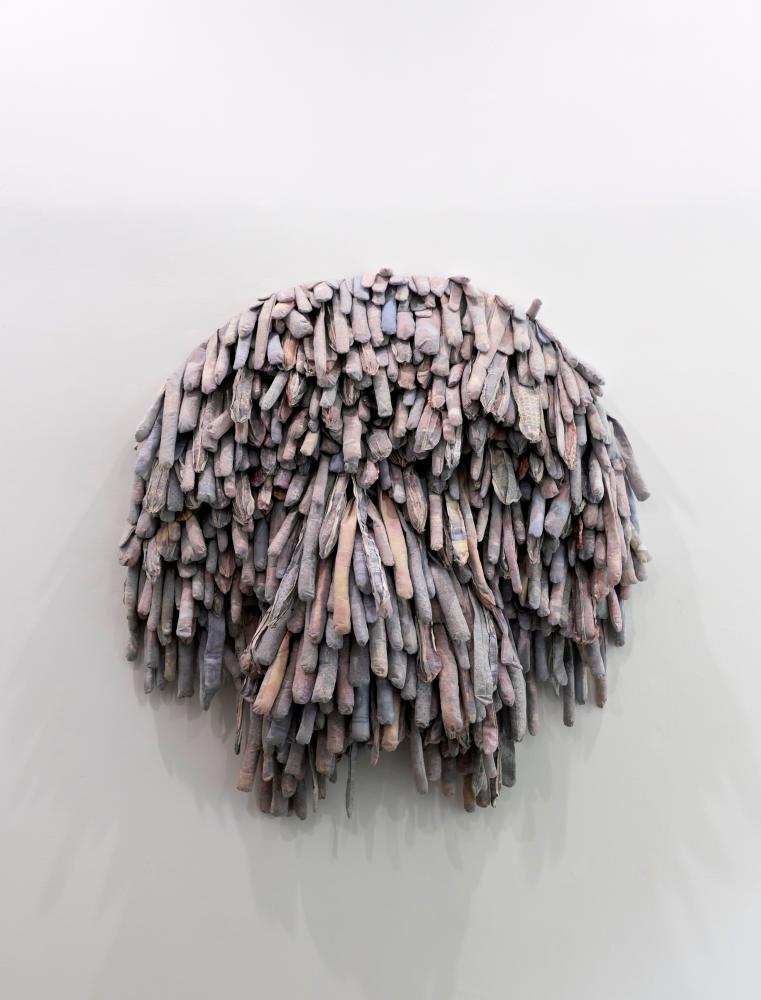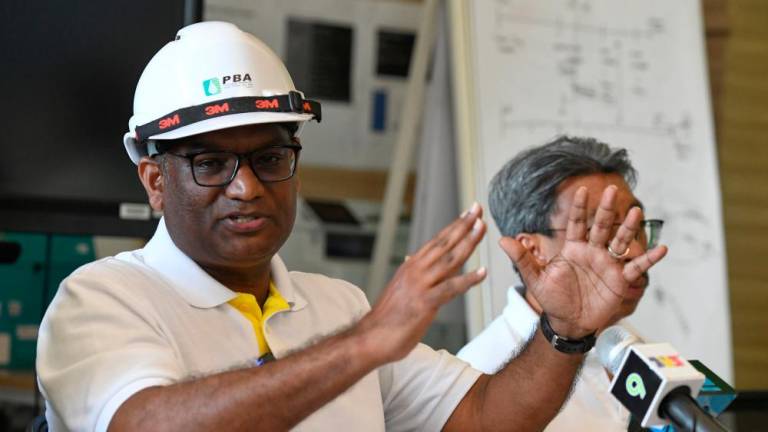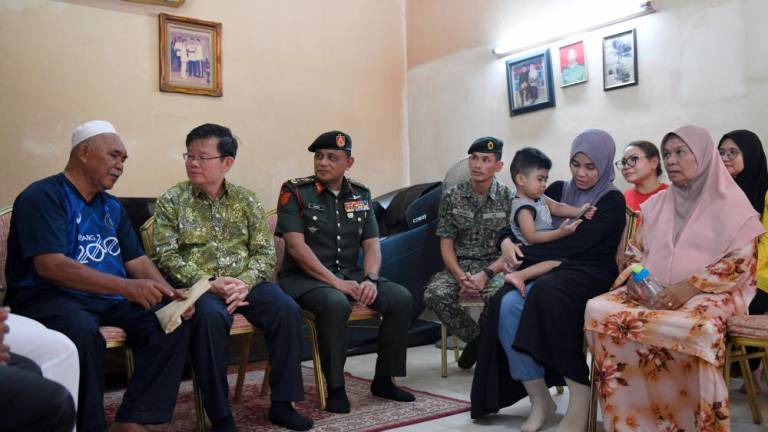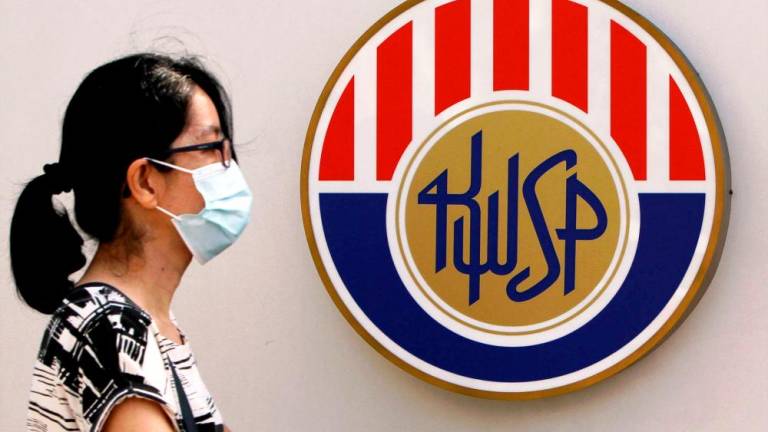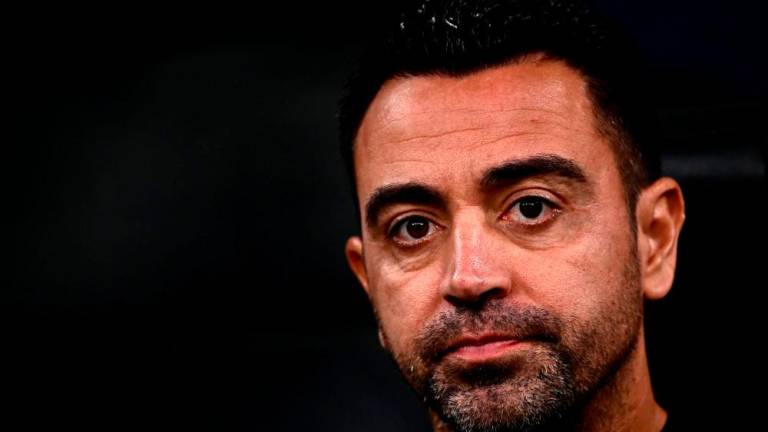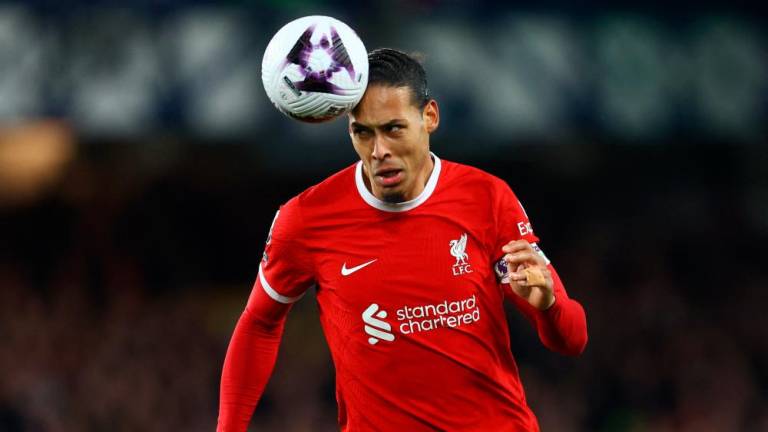YIM Yen Sum weaves together the fabric of time with the threads of life to form a tapestry that records the development of human civilisation. “Materials are imbued with meanings,” she said.
“For me, gauze symbolises the healing of our wounds, but the needle and thread are a little of a paradox. On one hand, they make clothes to shield and warm us. On the other, a needle’s tip can hurt us. It is an extreme coexistence.”
Yim explores the precarious balance between the development of these codependent materials and their countering roles. They are metaphors akin to the interconnected relationship between cities and their people as well as people and their culture.
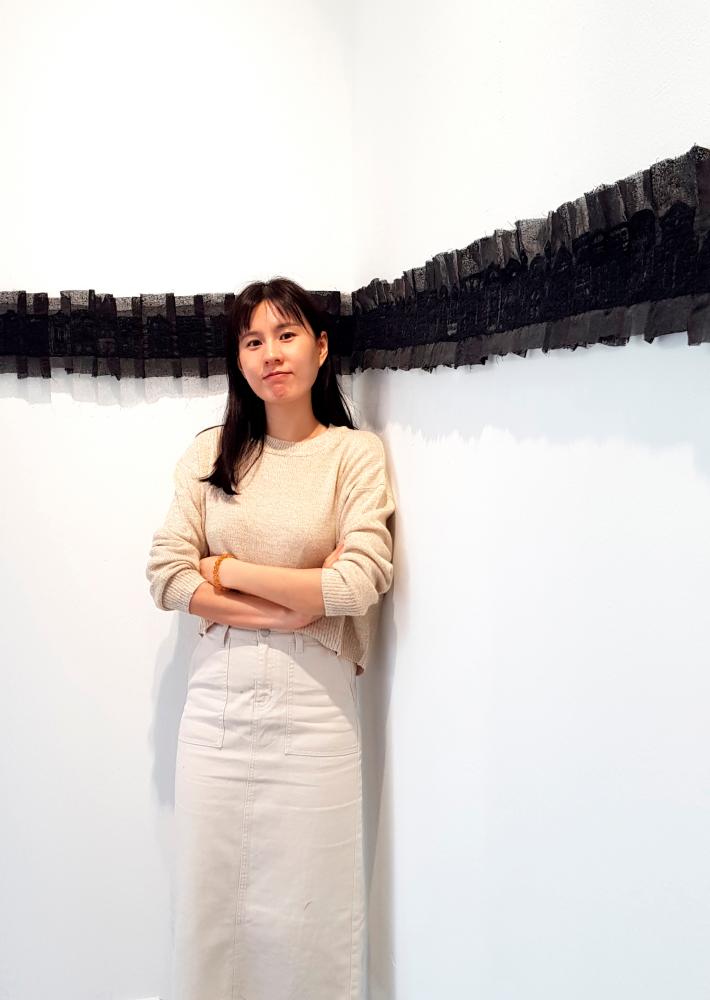
“The inextricably linked relationship of people and their environment is a network that cannot be seen with our eyes. In the process of needlework, every stitch narrates a different sentiment, and this sentiment unites a certain separated part together,” she explained. “The act of the needle and thread shuttling back and forth – two things that were once separated are joined together, depicting the interaction made when meeting new people ... the act of bonding.
“I’m restless around strangers and always on high alert when I meet someone for the first time. This makes me eager to make works that complement my personality. It’s funny that I’m afraid to be in contact with people but at the same time, I’m eager to connect with people,” she added.
“Making art has allowed me to live in my utopia where I exist in a world where people simply have good relationships and actually feel the warmth from one another. This makes me feel safe.”
Yim’s latest joint exhibition Errant Life, Promiscuous Form is a riff on Ludwig Wittgenstein’s formulation – “to imagine a language means to imagine a form of life.” Through the text, Wittgenstein draws attention to how language is used as cultural production but also reveals ambiguity for further interpretation in other artistic means.
The exhibition looks at artists whose practices speak to different forms of life, or inter-facings between life and form such as Yim, who uses her artistic creation as a language of imagination to weave a form of life.
Her works on show explore the balance between the development and the traditional, changing and coexisting at any time. The question of civilisation is deliberately posed in her project, both as a leitmotif and collateral theme to serve as a bridge connecting the city and people – where there is man, there is culture. Thus, the high rise conquests of civilisation are suddenly reminiscent of the historicist buildings, as a remembrance and representation of the demised past that constructed the present.
In many ways, her work is a reaction to the development of the city infrastructure alongside the modernising and vanishing of culture, while calling for reconsideration on rapid growth to expose its indifferent and compulsive changes.
“I do agree that we have to slow down the speed of development. However, the beauty of a developing city is not established by the demolition of traditional old buildings. In fact, the traditional and the culture of a city can be its symbolic identity,” Yim said.
“Looking at our city, we are able to see new buildings popping up one after another. Do we really need so many new buildings and commercial consumption areas? Undeniably, we are not only experiencing the drawback of accelerated urbanisation but also enjoying the convenience in this torrent of great changes.
“When a place and its people remain stagnant in progress and resist changes, it puts us in opposition to them,” Yim added. “The relationship is not hostile but a co-existing one. The absence of any part will hinder the development of our civilisation.
“And I think the discussion can return to the basic understanding of getting along with one another, by listening. Do we have time to listen and understand them? Do we know the reason for their rejection? I think this is what we have lost in the development of civilisation.”
The evolution of Yim’s creative works is like a personal log that examines a similar notion of growth and development informed by the past.
“I think an artwork is like a self-portrait. And if we put all our works together in each stage side by side, we can see the growth of an artist’s thought and the improvement of skills. That would most certainly be interesting. Very much like the process of civilisation isn’t it?
“However, I can hardly say that I have been consciously observing the existence of time. Time seems to stop when I am making art, my attention is focused on the dialogue between me and my artwork.”



